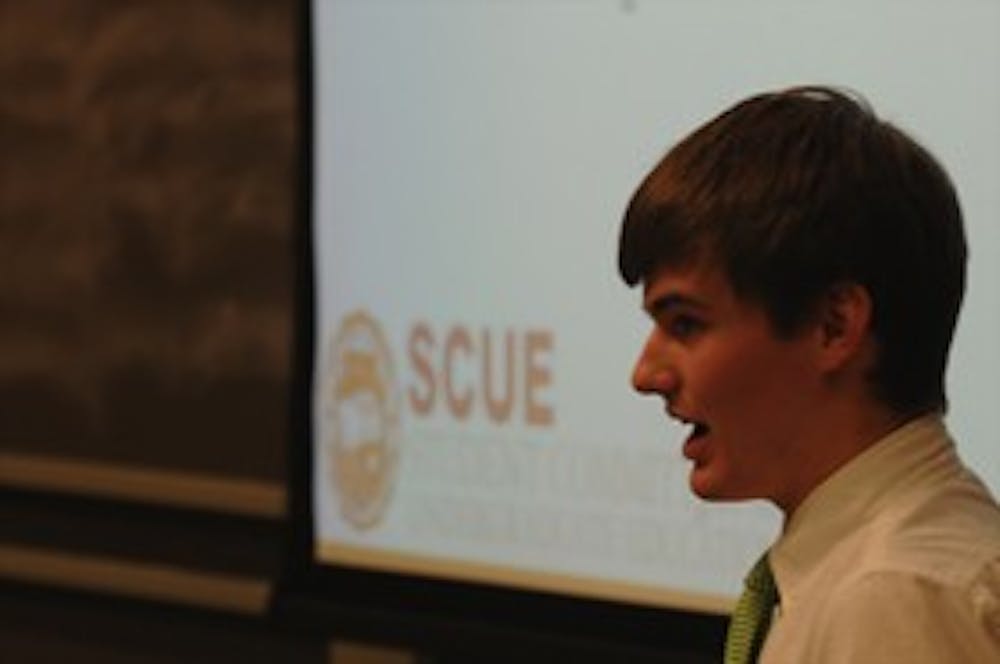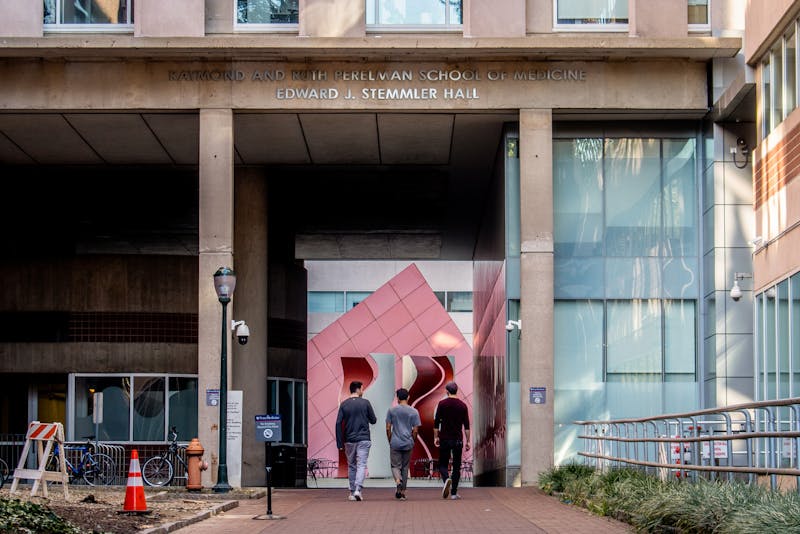
From technology to sector requirements to study abroad, the 2010 White Paper compiles the Student Committee on Undergraduate Education’s most important suggestions for University improvement.
Students, faculty and administrators gathered Tuesday night in Huntsman Hall to discuss aspects of Penn’s academic potential and policies at the White Paper Symposium.
Published every 5 years, the Paper is divided into three sections: “In the Classroom,” “Campus Life” and “Beyond Penn.” The major points in this year’s Paper include the use of technology, problem-solving learning, interdisciplinary research, academic credit options and study abroad.
The 2010 publication is the 10th edition published since SCUE’s founding in 1965.
Provost Vincent Price kicked off the Symposium, setting the tone for the event by emphasizing collaboration.
“This is the opening of a conversation,” he said.
Associate Director of the Provost’s Office Rob Nelson summarized Penn’s history of student engagement and the successful results of past White Papers. Programs like Speaking Across the University — which develops students’ rhetorical skills — can be traced back to the 1995 Paper.
“There’s really nothing like SCUE or the White Papers that exists in higher education,” he said. “It’s very fitting to pause and honor this moment.”
At the Symposium, several SCUE members highlighted the key components of this year’s Paper.
SCUE Chairman, College and Wharton sophomore and former Daily Pennsylvanian columnist Charles Gray examined broad visions for the curriculum.
He said the two major questions the group strove to answer were “How do we explore majors outside the curriculum?” and “How do we improve the review process for sectors?”
Gray spoke about reducing emphasis on grades and adding fractional credit models. One idea was to have optional recitations that delve more into a topic and provide a half credit.
Sarah Doherty, former vice chairwoman of SCUE and current treasurer, spoke about advancements in technology and what SCUE terms “problem-solving learning.”
“We don’t just need to use technology for teaching in the classroom,” Doherty said. “We need to start harnessing things like Penn InTouch and Blackboard to provide the Penn community with the full extent of intellectual capital that’s available.”
Problem-solving courses, Doherty explained, allow students to come up with innovative solutions to solve problems that the world is currently facing.
Board member and College junior Arthur Argall examined the idea of collaborative courses.
“We would love to have undergraduates more involved in interdisciplinary research centers and to propose interdisciplinary themes,” he said.
Argall used discussion of these courses as a bridge to encourage expansion in research opportunities as well.
SCUE members concluded the Symposium by advising all students to pick at least one section of the White Paper to focus on and then to contact SCUE with suggestions and responses.
But the Paper seems to already be attracting participation from previously uninvolved students, like College freshman Coby Lerner.
“I initially thought that SCUE dealt with lofty concepts that didn’t affect my life,” he said. “I now understand that every issue they address affects my life at Penn, and I want to get more involved.”
Gray and the rest of SCUE welcomed the attendance of these types of students.
“In many ways, this was an open SCUE meeting,” Gray said.
The 2010 White Paper can be found at scue.org/publications.
The Daily Pennsylvanian is an independent, student-run newspaper. Please consider making a donation to support the coverage that shapes the University. Your generosity ensures a future of strong journalism at Penn.
DonatePlease note All comments are eligible for publication in The Daily Pennsylvanian.








